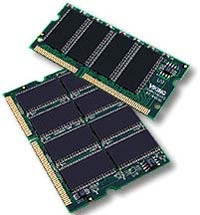 The PC industry has experienced a more successful year than expected. The production of laptops has surged, the Windows Media Center system is starting to claim space on store shelves alongside DVD players in living rooms, and companies continue to increase their investment budgets.
The PC industry has experienced a more successful year than expected. The production of laptops has surged, the Windows Media Center system is starting to claim space on store shelves alongside DVD players in living rooms, and companies continue to increase their investment budgets.
However, this year and likely next year, the market may not welcome many “game-changing” features. Important PC technologies such as wireless networking, truly mobile notebooks, or optical storage will struggle to find a direction in the mid-range computer market of 2006. Dual-core processing devices will become the standard, yet companies like Microsoft are concerned that application specialists may not have enough time to adapt their software to fit the new dual-core “world.”
As a result, the new style of PC systems will only become truly evident in 2007. By that time, Microsoft will have released Windows Vista, the successor to the Windows XP operating system. Client software developers will have the opportunity to thoroughly explore and master 64-bit multi-threaded software. Certain technologies like wireless PC cards and high-definition video will become common terminology among PC users.
Windows Vista: Emerging in 2007 but Popular in 2008
The features in Microsoft’s latest operating system will be somewhat simplified compared to what the company initially promised, but still provide users with significant improvements in security and graphics. The American software giant has stated that customers will also find it easier to search for files and documents.
Gartner Research recommends that users begin experimenting with Windows Vista as early as next year to prepare for a large-scale transition in 2008. However, Sam Bhavnani, an analyst at Current Analysis (USA), believes that consumers will only notice Vista replacing Windows XP Home in stores and on Dell’s website.
Windows Vista will become more appealing to consumers as Microsoft and PC manufacturers popularize 64-bit computing in 2007. Microsoft will also promote 64-bit as a revolutionary step in computing, gradually encouraging consumers to transition.
Mobile Information
American service provider Veziron Wireless is offering PC cards that connect to the EV-DO mobile network for PC users. Dell, Hewlett-Packard, and Lenovo also plan to release computers integrated with EV-DO or HSDPA (High Speed Downlink Packet Access) chips next year, similar to the rollout of Wi-Fi chips two years ago.
As mobile network speeds improve, simplified client models will expand. “Thin clients,” which have been tested for a few years, remain unpopular because users prefer to keep all their necessary information in one place. However, users will soon be convinced by the prospect of accessing network data anytime, anywhere, leading them to accept storing data on internal servers.
Storage Technology
Orthogonal recording technology, which allows for more data storage, has been discussed for many years and is beginning to emerge in the market. In 2007, it will become the mainstream in computer drives, providing customers with storage capacities of up to terabytes (TB).
The most significant change is the transition from DVD to Blu-ray or HD DVD. These two technologies will appear in some high-end systems in 2006, but it will be the following year before they penetrate the broader market.
Fuel Cells on the Move
A small but important factor in mobile computing is battery life. In 2007, products with longer battery life are expected to emerge. Some improvements are being made in energy technology, but significant changes have yet to occur.
Methanol fuel cells, capable of powering laptops all day, will begin to make an impact in the next two years, although they are unlikely to become mainstream. Like any emerging technology, it will be adopted by a few pioneers, while users will wait for it to become an official standard.
Hai Nguyen





















































